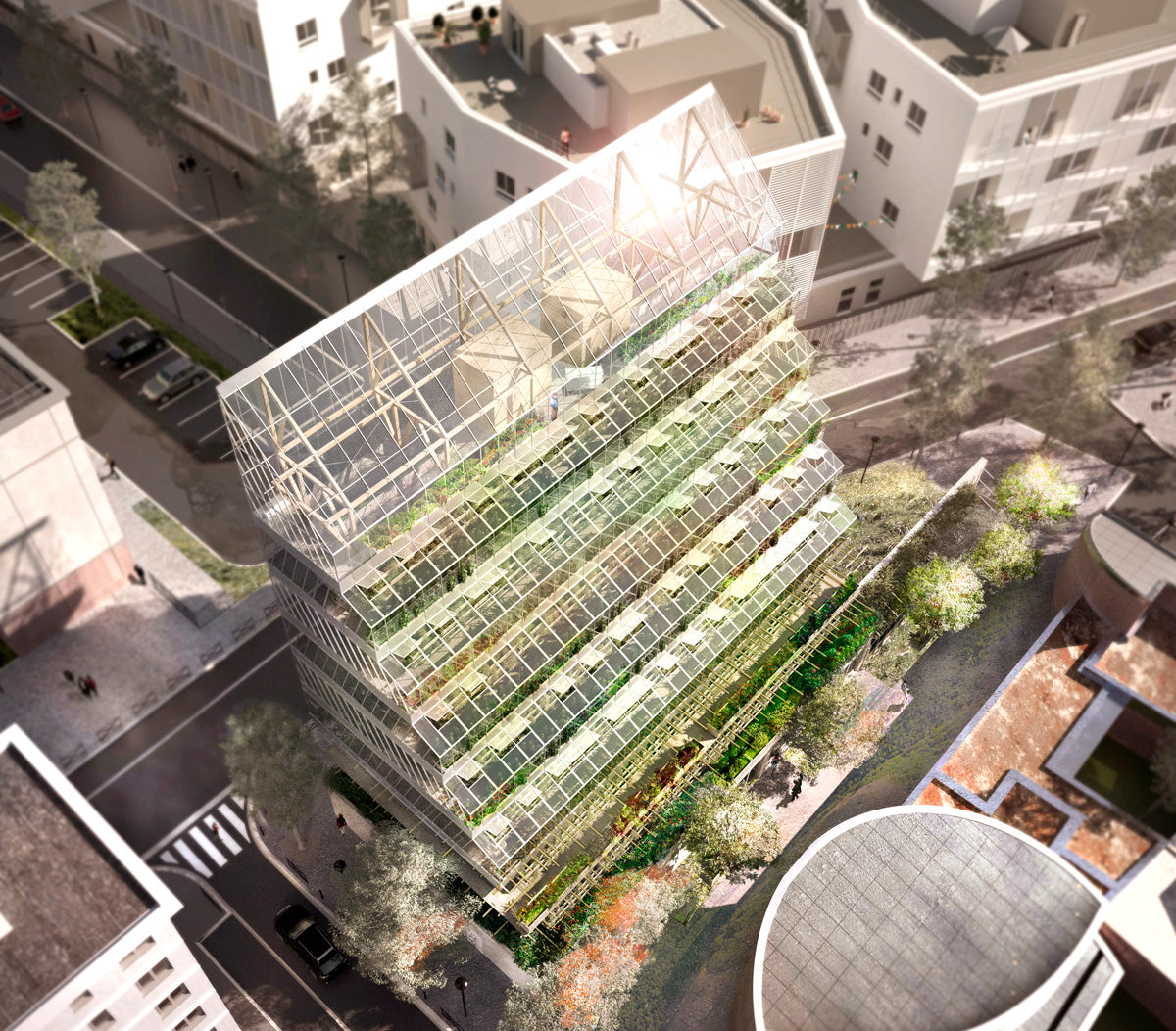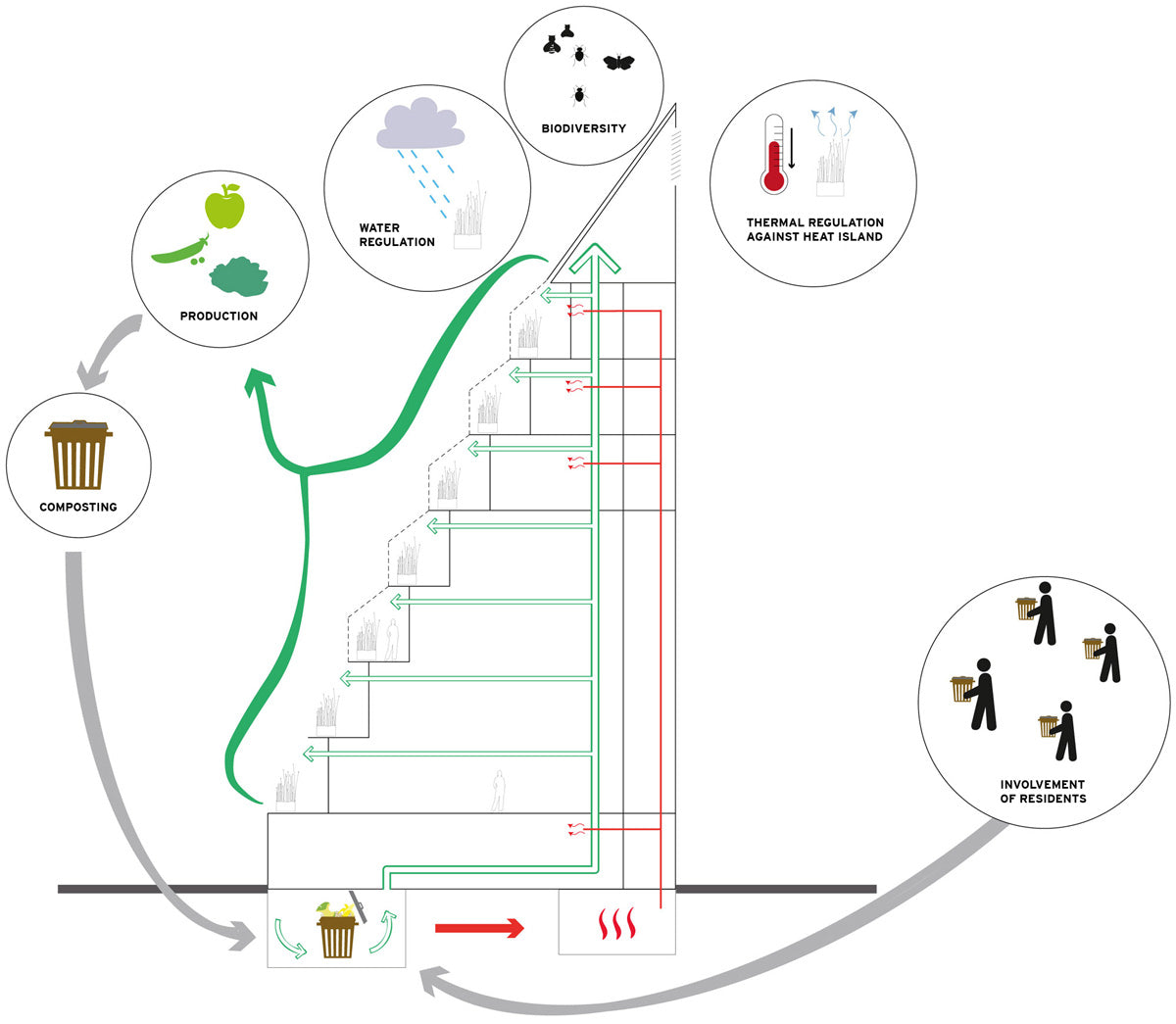Architecture cannot separate its origins from the development of agriculture, both disciplines have human being subsistence as purpose. Some cities have adopted production models to supply their citizens, by showing important urban benefits and long-term solutions.
Supporting 10 billion people in urban environments by 2050 involves strong environmental pressure to be able to provide housing and food. House production, from its construction, in addition to energy consumption in buildings, place the industry as one of the most pollutant ones. Agriculture, on the other side, is one of the most severe factors for soil degradation, as well as being responsible for 25% of the carbon footprint and 70% water consumption.
Replicable proposals of urban agriculture have emerged across the world, mitigating some environmental issues and contributing to a better food safety. Entrepreneurs have discussed the usefulness of fusing agricultural productivity with urban spaces and their projects identify key benefits adapted to different contexts.

Revitalizing Residual Spaces
Places like wastelands can become unsafe spots, while the remaining spaces like rooftops have low possibilities of being used. Urban cultivation practices maximize productivity in these places and increase life quality for nearby communities by enriching the landscape quality.
The Farming Underground project is a production initiative in a forgotten place. Inside underground shelters used during World War II in London, they made they necessary adjustments to turn the place into a hydroponic garden. The controlled environment guarantees that each product offers the best possible quality, their initiative is an example of use of residual space and has managed to turn into a profitable business model.
Creating Community
Open spaces are key for population spreading, it has been proven in several psychological studies that they have impact on health. Green areas reduce stress and, in the case of urban environments, the overcrowded feeling. Urban orchards offer the opportunity to practice outdoor activities, which promote community interaction and contribute to society.
Huerto Tlatelolco is a project by the CultiCiudad organization, whose mission is to “build regenerative, educational, formative, and social bonding models around growing food, the closing of the nutrient cycle”. Huerto Tlatelolco started activities in 2012, on one of the marks left by one collapsed building after the 1985 earthquake, their practices included permaculture knowledge and they focus many activities on the integration of the community by promoting social fabric and cohesion.
We believe that urban farming is a tool for deep social transformation, as well as a strategy to fight against climate change, enforce our food sovereignty and security. Urban orchards offer the environmental benefits of a quality urban green area, they create microclimates and habitats for animals and plants; they allow for the nutrient cycle to be completed by creating a fertile ground, decrease food waste, produce nutritious vegetables, and integrate the community. –Huerto Tlatelolco

Ecological Benefits
Like green areas as parks, urban agriculture plots improve air quality by filtering CO2 particles. Productive rooftops and gardens contribute to decrease the temperature in urban heat islands. Depending on their design, these spaces can seize rain and organic waste.
ABF-LAB is a French studio, which developed an architectural conceptual proposal: Agro Main Ville. They believe that creating this kind of projects catalyzes synergy between architecture and food production. The structure allows flexibility in the architectural program, so it can be used to grow, as housing, or for mixed use. The building is designed in such a way that it uses solar energy and it would add rainwater harvesting to its system.
We are convinced that this kind of project contributes to improve the environment, helped by the production of local, healthy, and quality food, reducing costs, CO2 emmissions, and the required fosil fuels. -ABF-LAB


Urban Improvement
There are several study cases, like MUFI (Michigan Urban Farming Initiative) in the United States where, following the popularization of farming practices, urban improvements have been promoted. These communities have adopted the name agrihoods (agricultural neighborhoods) and their crops are delivered free of charge to churches and food banks. MUFI’s goal is to rethink urban development in one area of the city, incorporating its education, sustainability, and community models. According to the Center for a Livable Future of the Johns Hopkins University, there are studies that suggest that the presence of urban farming can be associated to improved neighborhoods, reduced crime, and community cohesion, these indicators increase property value.
Source of Employment
According to FAO (Food and Agriculture Organization of the United Nations), urban farming creates one job for each 100 square meters of crop area, marketing, sales, and distribution. FAO carries out training brigades, where they instruct disadvantaged social groups to create their own orchards. This activity helps families cover their food needs and they can even sell the surplus.
In 2016, the government of Paris launched the Parisculteurs initiative, project whose goal was to cover rooftops and walls with 100 hectares of vegetation and one third of the area would be designated to urban farming. The program exceeded it goal in 2019 and since then, attention was given to the area of professionalization, since it is estimated that more than 250 jobs have been created.



